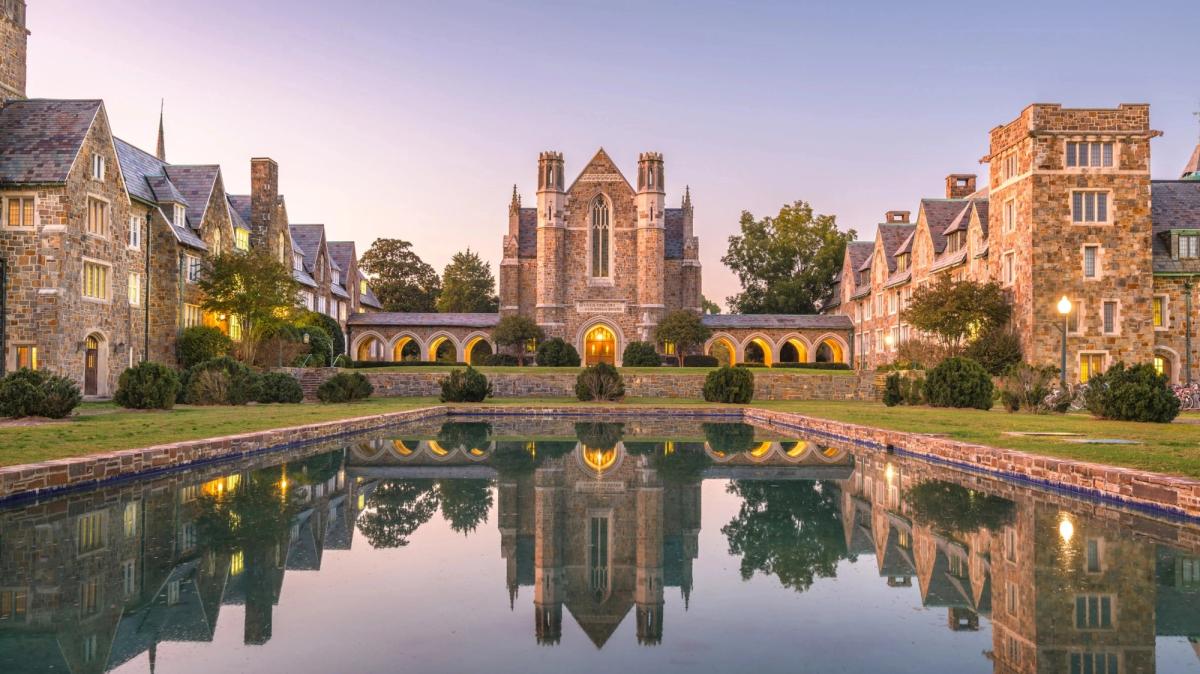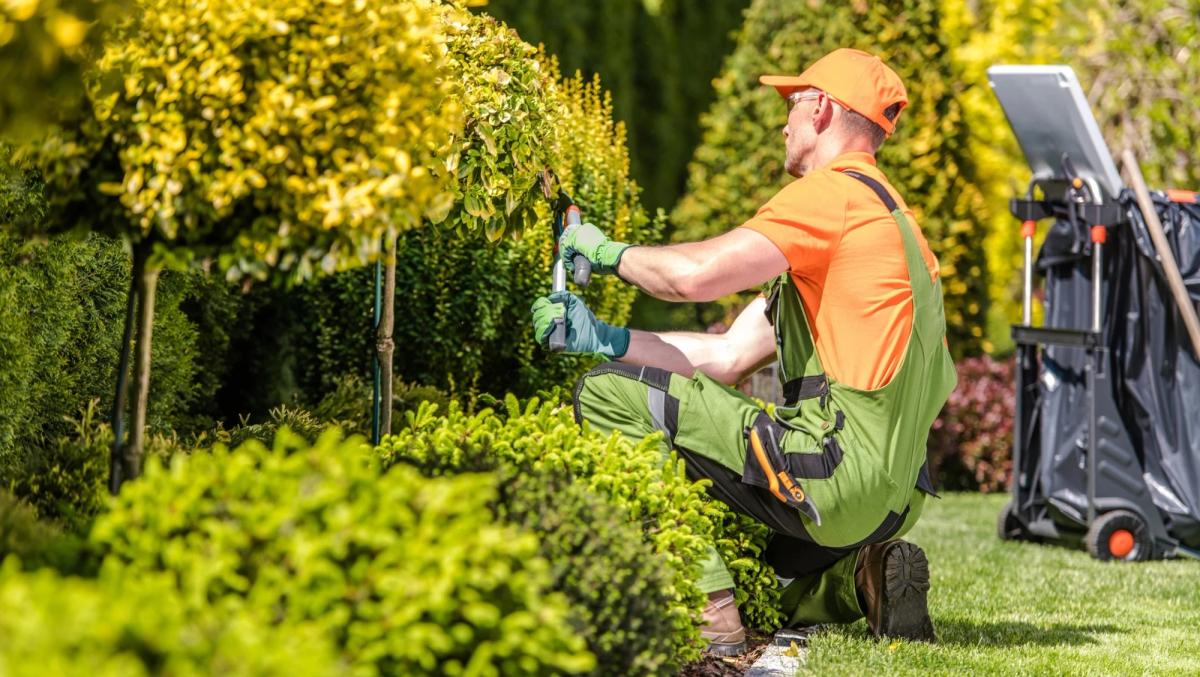Top 5 Benefits of Campus Landscaping with Native Plants

This article spotlights five benefits of using native flora in campus landscaping, supported by examples of institutions which have successfully incorporated natives in their campus landscapes.
Learn how designing campus landscapes with native flora can benefit educational institution. These benefits range from reducing costs to promoting sustainability and engaging students in environmental issues.
And, also learn how various institutions across the country are reaping these benefits by implementing natives in their landscape designs.

Campus landscaping is a powerful tool that draws prospective students to a college or university and can influence their enrollment decisions. In addition to creating first impressions, well-designed, outdoor spaces also evoke tranquility and positivity, fostering a greater appreciation for the institution.
However, as environmental concerns continue to mount, many college campuses are embracing a shift towards designing landscapes with native plants. This approach combines form and function for developing landscapes that are not only visually appealing, but are also beneficial to humans and the environment.
In this article, we will explore some of the key advantages of using native species in college campus landscaping. We will also examine how various colleges and universities are leading by example in designing beautiful and sustainable landscapes in educational campuses.
Top 5 Benefits of Campus landscaping with Natives
1. Design a Campus Landscape that is Rich in Biodiversity
Since students spend more time on campus than at home, providing a lively, healthy atmosphere is necessary to enhance the educational experience. What better way to do this than with native landscape design? Native landscapes serve as habitats for native bugs, birds and animals while creating a source of live entertainment for the students.
A good depiction of a wildlife-friendly landscape is the campus design of Delta State University which has introduced many endangered native keystone trees like bald cypress and water oak. This design actually led to increased sightings of fox squirrels and non-venomous eastern garter snakes.
Another example of designing a landscape for the “wild” can be found at the University of Nevada. By mass planting native species, the institution turned its open grounds into a mini wildlife haven. Students regularly spot many iconic species like roadrunners, cotton tail rabbits, hummingbirds and Great Basin Whiptails.
2. Foster Environmental Stewardship & Learning
Observing wildlife often makes students realize how their lives are actually intertwined with those of wild creatures. By observing new sights and sounds of busy bees, birds and curious animals, students will get a chance to appreciate the specialty of their campus, making them more inclined to protect it.
Therefore, native landscapes can give them the ability to understand their role in protecting these species.
For this reason, many institutions are planning to convert their college campuses into ecological communities and thereby, increase interactions between students and the local wildlife populations. At the heart of this initiative is a natural landscape which multiplies the local biodiversity with the power of indigenous plants.
For instance, the University of Minnesota started many initiatives like creating a butterfly garden, native prairie garden etc. to conserve many endangered bird and butterfly species. The campus even turns into a stopover spot for many migratory birds like sparrows. Students actively participate in these conservation efforts.
As a result, students increase their understanding of complex environmental issues and begin building the right skills to address these issues.

3. Instill Sustainable Living
It's heartening to see many institutions, like the University of Southern California and the University of Nevada (Las Vegas), taking steps towards sustainability by incorporating native species in their landscape development projects. This approach also creates green spaces that turn into hands-on educational centers for learning about the importance of sustainable living.
By designing campuses with native flora, universities are also showing that it is possible to balance growth and beauty with responsible environmental stewardship. Campuses become huge examples for the feasibility of sustainable designs are quite feasible and can promote this idea (by example) to other public spaces.
NOTE: If you are interested in learning about native landscape designs in other non-residential spaces, check out our article on native landscapes on corporate and corporate properties.
NOTE: Achieving a balance between sustainability and environmental-friendly landscaping requires careful selection of natives. It is crucial to choose non-invasive species that use minimal resources and support local wild species at the same time. Also, random plant selections that are not native to the region can undermine the mission of "landscaping for the wild. So, choose wisely to create thriving, natural spaces that contribute positively to the environment.

4. Promotes Mental Health and Physical Well-Being
Natural landscapes have been shown to promote wellness in educational institutions by reducing stress, boosting mental health and enhancing academic performance. The presence of wildflowers and native trees, bustling with wildlife activity, can create a calming environment to help students and faculty feel more relaxed and focused.
The University of Illinois Arboretum at Urbana-Champaign is an excellent example. This school has integrated natural landscapes into its design to promote wellness. By implementing the "Illinois Nature Preserves" program, the university converted 160 acres of its southern campus into "living laboratories" and healing spaces for staff and students to connect with nature.

5. Reducing Landscape Maintenance Efforts and Cost
Colleges and universities can significantly decrease their landscape maintenance costs by using natives in their campus designs. As natives are well-suited to the local environment, they require less water, fertilizers and pesticides. Additionally, they are equipped to withstand local climatic conditions, which means they are hardier and less susceptible to pests and diseases than non-natives.
The University of Minnesota is a great example that has successfully implemented natives in its college campus design to cut down maintenance costs. The institution is actively participating in the 'No Mow May' campaign to spread awareness of the benefits of reducing mowing efforts, which extend beyond dollar savings.
NOTE: If you're interested in learning more about the value of using native plants over traditional lawns, read more here.
By choosing to work with natives, universities and colleges can promote biodiversity, reduce carbon footprint, enhance the beauty of their outdoor spaces while create an inspiring atmosphere for students, faculty and staff.
If you are interested in the idea of campus landscaping with native flora, consider reaching out to us! At My Home Park, we offer a range of pre-designed plant collections that are perfect for a campus landscape. Our expert team can work with you to determine the best combination of natives to design a beautiful, sustainable and low-maintenance landscape. Contact us today to learn more about our offerings and how we can help you achieve your sustainable landscaping goals.
References:
1. https://news.usc.edu/180040/native-plants-usc-campus-student-project-natural-gardens/
3.https://wellness.illinois.edu/campus-service-units/wellness/faculty-and-staff/nature-and-culture/
Share this article


